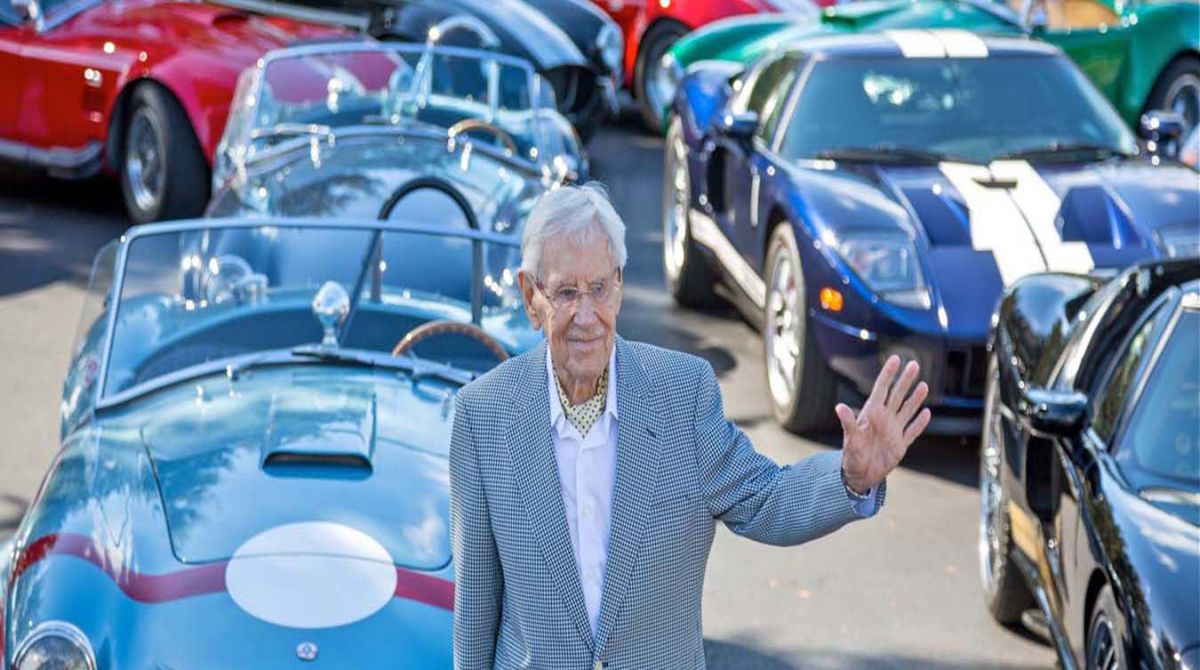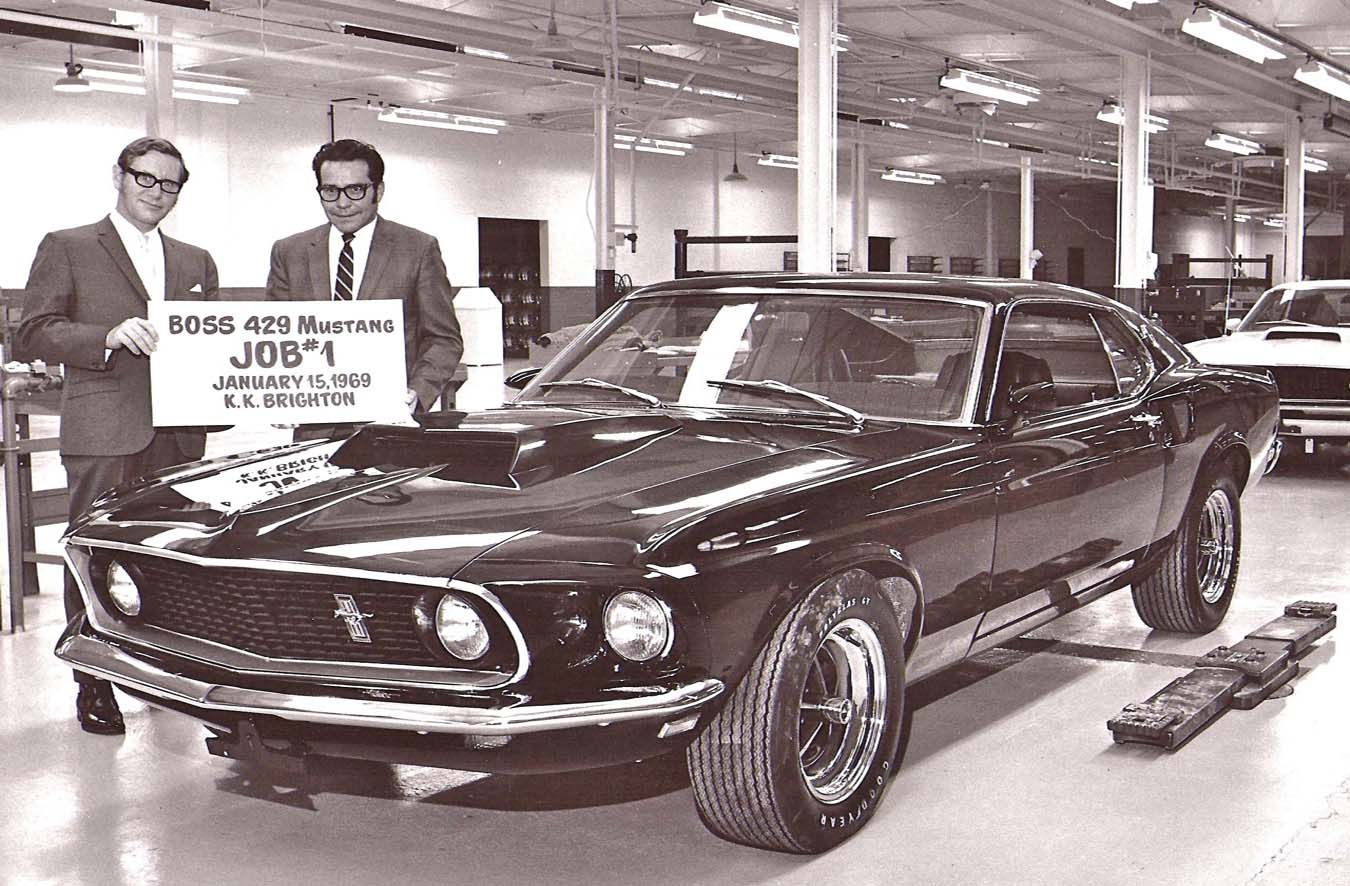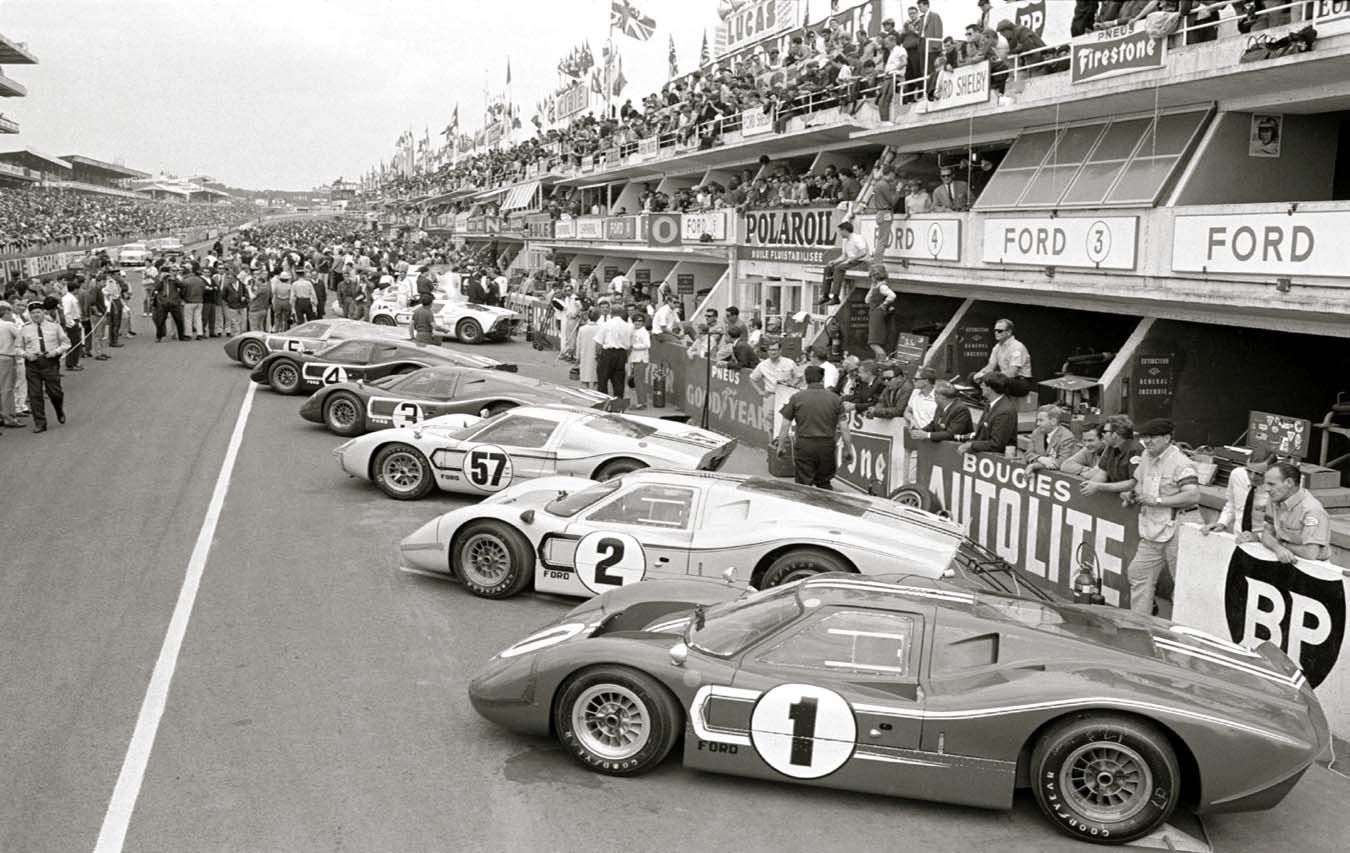Obituary: Marking the achievements of Roy Lunn, Kingston University alumnus and ‘Godfather of the Ford GT40'
Posted Thursday 7 September 2017

Roy Lunn, whose design teams created renowned American cars such as Ford's GT40 and the original Mustang, has passed away at the age of 92. Roy studied Mechanical and Aeronautical Engineering at Kingston College of Technology (which later became part of Kingston University) in 1954, and attributed many of his engineering skills to his time here.
Known as the ‘Godfather of the Ford GT40', Roy's influence on the industry is said to have changed the automotive landscape in America and beyond, with his work set to continue to benefit the industry far into the future. As well as his illustrious achievements at Ford, Roy created both the iconic Jeep Cherokee and the Eagle four-wheel drive car, engineered the Presidential limousine to withstand small arms, gas and ballistic attacks, and headed the military compliance programme for the Pentagon.
"The team that put together the Ford GT of today was inspired by the work of Roy and his team and we will be forever grateful for the work they started," said Ford president of North America Raj Nair in a statement, according to Automotive News. "His legacy as the godfather of the original Ford GT40 was well known throughout the company, and he helped bring Ford a performance car that is just as legendary today as it was in the 1960s."
Obituary - Roy Lunn - 26 June 1925 -5 August 2017
From SUVs to supercars, the industry wouldn't be what it is today without Lunn's influence.
Roy Lunn was born in Richmond in 1925, and started his engineering career at AC Cars after serving in the Royal Air Force in World War II. In the late 1940s, he became the assistant chief designer at Aston Martin and built two DB2s that competed at Le Mans. Later he spent three years as chief designer and engineer at Jowett Cars, and in 1953, he joined Ford as an engineer and product-planning manager.
In the US, Ford couldn't help but notice the success of Lunn, and offered him a product development management job at their headquarters in Dearborn, Michigan. During Lunn's tenure from 1958 to 1969, some of the projects he was responsible for included the Mustang I, Big Red, the Superhighway truck, the Flying Car Concept, the mid-engineered Mustang and all of the GT40 variants.
 Lunn (left) and Fran Hernandez with the Boss 429 Mustang
Lunn (left) and Fran Hernandez with the Boss 429 MustangRoy left Ford in 1969 to become Vice-President of Engineering at Kar-Kraft, where he oversaw production of the Boss 429 Mustang, above, before being recruited by American Motors Corporation (AMC) to become the Technical Director of Engineering for Jeep.
There Roy was responsible for the vehicle that would change the automotive landscape in America and beyond: the '83 Jeep Cherokee XJ. It is considered to be the first modern, lightweight four-wheel-drive unibody SUV. The Cherokee was the first American-branded vehicle to be manufactured in China and a huge success for AMC and then Chrysler. Over three million units were sold by 2001. The XJ Cherokee has been referenced as "one of the most influential vehicles" in A Century of Automobiles.
Roy is also credited with the AMC Eagle, the first production four-wheel-drive car. He was elevated to Chief Engineer of AMC and President of Renault Jeep Sport. Between 1982 and 1983 Roy served as Chairman of the Technical Board of the Society of Automotive Engineers (SAE), and was elected a Fellow of the Society in 1983.
After retiring from AMC in 1985 he joined AM General as Vice-President Engineering to head the HUMVEE military compliance program for the Pentagon.
In 1987 Roy retired to Florida and continued to work on automotive projects. Aside from sailing his Cat Boat, building two houses and playing golf, he authored three books: The Oil Crisis: Sooner Than You Think!, Globalization- A Worldwide Quest For A Sustainable Future, and The World Crisis- It All Started With 9/11. His story about the history of Jeep is still on the drawing board, as are his tireless efforts towards designing a new ‘People's Car' out of entirely sustainable materials.
After relocating to Santa Barbara, California in 2015 he again set up a working home office and continued development of his new concepts that drew the attention of the local college - University of California, Santa Barbara. Within six months he was a Mentor to their Mechanical Engineering program and met with students weekly to advise and teach them. He was rewarded with an in-depth research project focusing on his plans for the ‘People's Car' and a 3D model of the concept.
 1967-Le Mans winning Mark IV
1967-Le Mans winning Mark IVRoy Lunn is one of the industry's original disrupters, the product of an enquiring mind and relentless ability to utilise it. He was inducted into the Automotive Hall of Fame in 2016 for overseeing the development of the legendary Ford GT40 that ended Ferrari's domination of endurance sports car racing. GT40s won the 24 Hours of Le Mans four consecutive times -1966-1969. He felt it was the proudest moment of his life when his peers in the industry recognised his work. His goals throughout his career were visionary, with a clear eye to the future. Roy was especially proud of the 1967-Le Mans, above, winning Mark IV, the first GT40 designed, engineered, powered, developed and built in the US.
In lieu of flowers, the Lunn family suggests that any donations should be made to the University of California, Santa Barbara, in memorial of Roy Lunn. Gifts will support engineering and design education of the Department of Mechanical Engineering.



